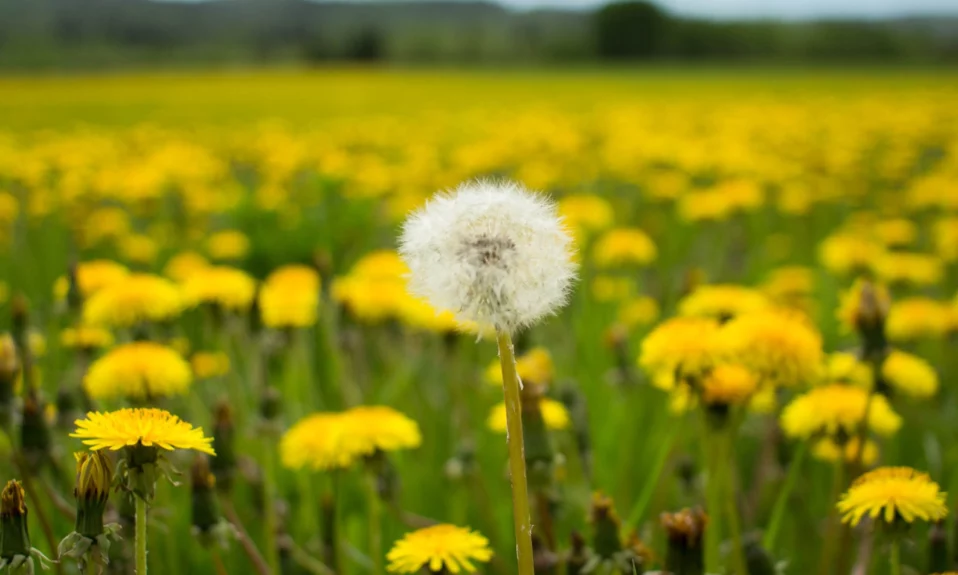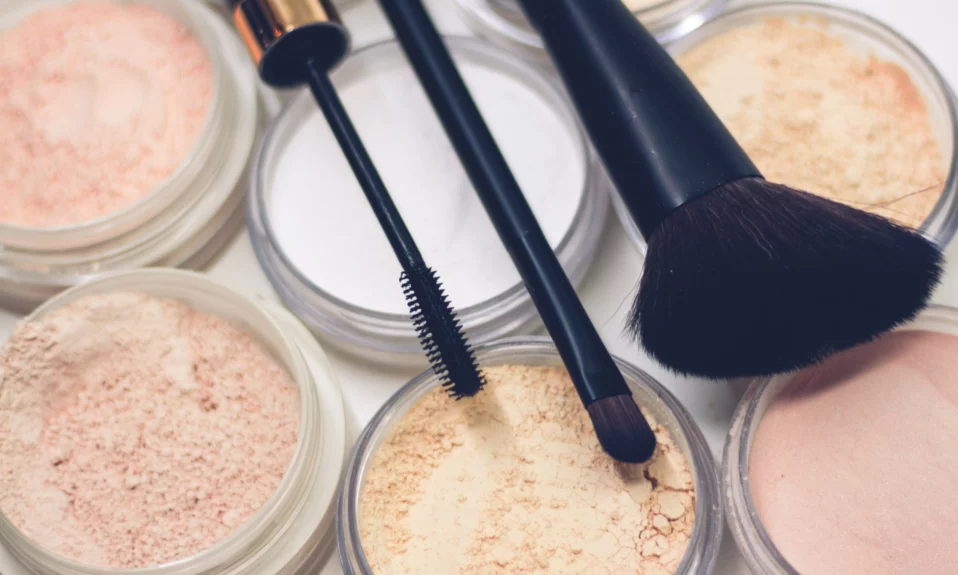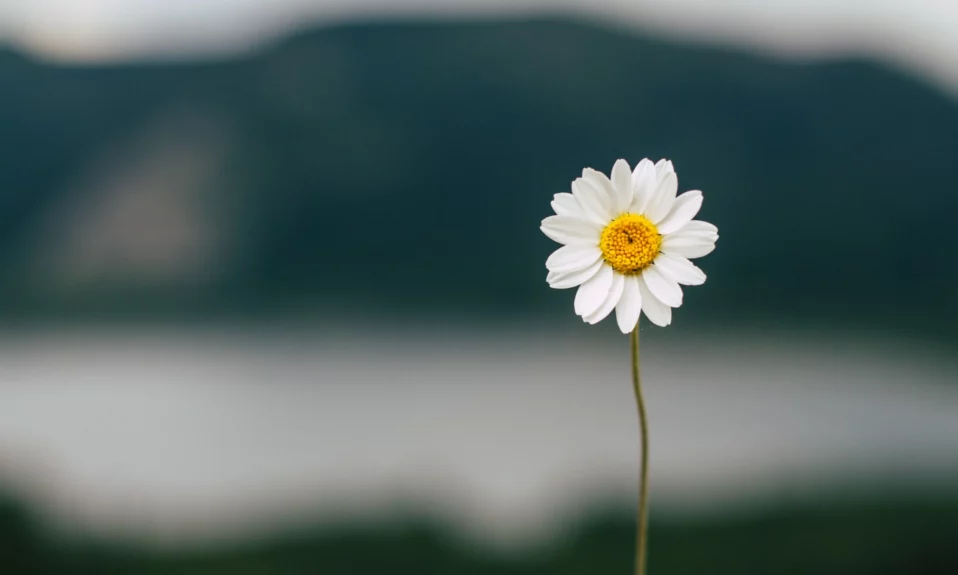
“He loves me, he loves me not” probably reminds us of white flowers with a yellow center. The flowers we know as daisy. The important point here is that daisy flowers do not only include white blossoms with a classic yellow center, but also have different types and colors.
These beautiful flowers are the best choice to plant in the garden of any home. In fact, these flowers are the most known, most recognizable, most loved and the best choice for planting among flowers. However, besides all this, there are species of daisy that are known as invaders and are considered weeds.
Today we are going to know more about these colorful flowers. If you want to have general information about flowers, this article will help you.
Let’s go back to the world of daisies and their colors. Let’s go!
- What is the distinctive feature to recognize a daisy flower? Let me help you!
- What do daisies symbolize? In terms of culture, mythology or colors!
- What are the types of daisies? More than 2000 species!
- What are the superstitions about daisies? You may believe it!
- Let’s read some interesting facts about Daisies!
- Want to add a daisy to your garden? If the answer is yes, you are lucky!
- What is the meaning of the color of daisy educational petals? Let’s find it!
- How to make colored daisies? A simple, fun and colorful project!
- What are the daisy color codes? Colors named Daisy!
- Last line
What is the distinctive feature to recognize a daisy flower? Let me help you!
Because all daisies are flowers, but not all flowers are daisy! Daisies are flowers that wake up at sunrise and fall asleep at sunset. They fold their little petals to sleep. The word daisy in Anglo-Saxon, which is Old English, means “day’s eye”, a name not so unrelated to the function of flowers.
A central disc with several petals around it makes the appearance of this flower. But in reality, each of the many points within the disk is itself a tubular flower. Like a sunflower but in a smaller size. Much smaller!
The petals around the central disk in a daisy are called ray flowers. So each daisy is made of several disk flowers in the center and several ray flowers around the disk. At the bottom of the ray flowers in the daisy there are green leaves that are not sepals, but called phyllaries. Because it protects all the rays.

What do daisies symbolize? In terms of culture, mythology or colors!
By looking at daisy flowers, you can understand that these flowers are full of positive energy. These flowers wake up with the presence of the sun. So, this is the reason why the energy and brightness of these flowers is like the sun. Depending on how we look at daisies, they can have different meanings in terms of culture, mythology, and colors. Let’s see:
The meaning of Daisies from the cultural aspect
- Having a bouquet of white daisies for the bride can be a symbol of purity.
- To make someone’s day full of joy, giving a bouquet of daisies can make it easy, as it is a symbol of cheerfulness.
- Daisies are also suitable for giving as a gift to a family that has just become a parent because it is a symbol of fertility.
- The daisy is a symbol of beginning again. So it is appropriate to give a bouquet of daisies to someone around you who is making a change in his/her life.
The meaning of Daisies from the mythology aspect
- In Roman mythology, Belides was a nymph who was chased by the god of seasons and gardens, Vertumnus, and could not get rid of him, so she had to transform herself into a daisy. This shows the innocence and beauty of Daisy.
- In Celtic mythology, when a child dies, the gods sprinkle daisies on the ground to comfort the bereaved parents. So daisy was a symbol of joy and happiness.
- In Norse mythology, the favorite flower of Freya, the goddess of love, was the daisy. So it got its meaning from her. In this way, the daisy was a symbol of love, motherhood and fertility.
- And, in the Christian tradition, the daisy is associated with the Virgin Mary, so it is a symbol of chastity, innocence and humility.
The meaning of daisies in terms of colors
- White daisy is a symbol of purity and innocence.
- Pink daisy is a symbol of happiness, positivity and childish or platonic love.
- Red daisy is a symbol of love and deep and passionate feelings.
- Orange daisies are a symbol of friendship, warmth and happiness.
- Yellow daisy is a symbol of pure friendship and joy.

What are the types of daisies? More than 2000 species!
It is true. There are more than 2000 different types of daisies in different shapes and colors. In this section, only a part of them is mentioned. You should note that most of the mentioned species have different types. Let’s see the wonder of the world of daisies!
English Daisies
This type of daisy is known as common daisy or lawn daisy. Also, they grow in April and June and available in white, pink, blue and red color. The flowers are small and delicate with thin, spiky petals.

African Daisy
This type of flower has bigger petals in red, orange, purple, pink and yellow colors. For this reason, it is considered one of the most beautiful types of daisy. African daisies do not need much water, but they need a lot of sunlight and do not like hot weather.

Gloriosa Daisy
Another name of this type of burning flower is black eye. Because, this type of daisy has a small, circular and brown center. It also has long and narrow petals that can include different shades of yellow and red-brown colors. Moreover, they are easy to grow and attractive to bees and butterflies.
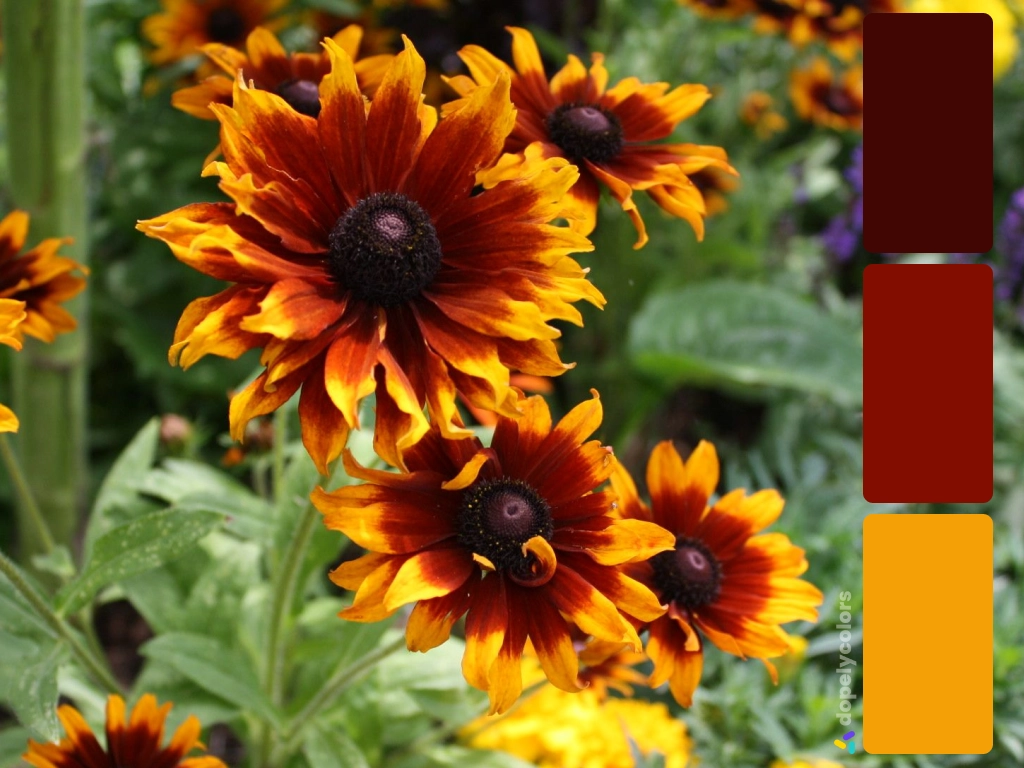
Blue Marguerite Daisy
This type of daisy is named for its sky blue petals and yellow center. It is also known as Felicia Amelloides. Besides, they grow a lot from early summer to early fall and is native to Africa.

Shasta Daisy
In fact, this type of daisy is perennial and looks like a common daisy. That is, they have long white petals and a yellow center.

Cape Daisy
Purple, pink, orange, white and yellow colors are among the colors of this type of daisy, with a black, blue and dark brown center. Also, their centers can be small or large. If the centers are large, the petals become long and thin and look like sunflowers. Moreover, these annual flowers are rich in pollen, which is very tempting for bees.

Indian Chrysanthemum Daisy
Indeed, from early summer to early autumn is suitable for growing this type of daisy. Most importantly, this species has medicinal properties and is used to prepare healing tea.

Gerbera Daisy
You must have seen this species in flower shops and gardens. Thus, they have red, white, purple, pink, yellow and orange colors and the flowers of this species are very large. Although gerbera daisies can perform well in hot climates, they grow better in cooler places.
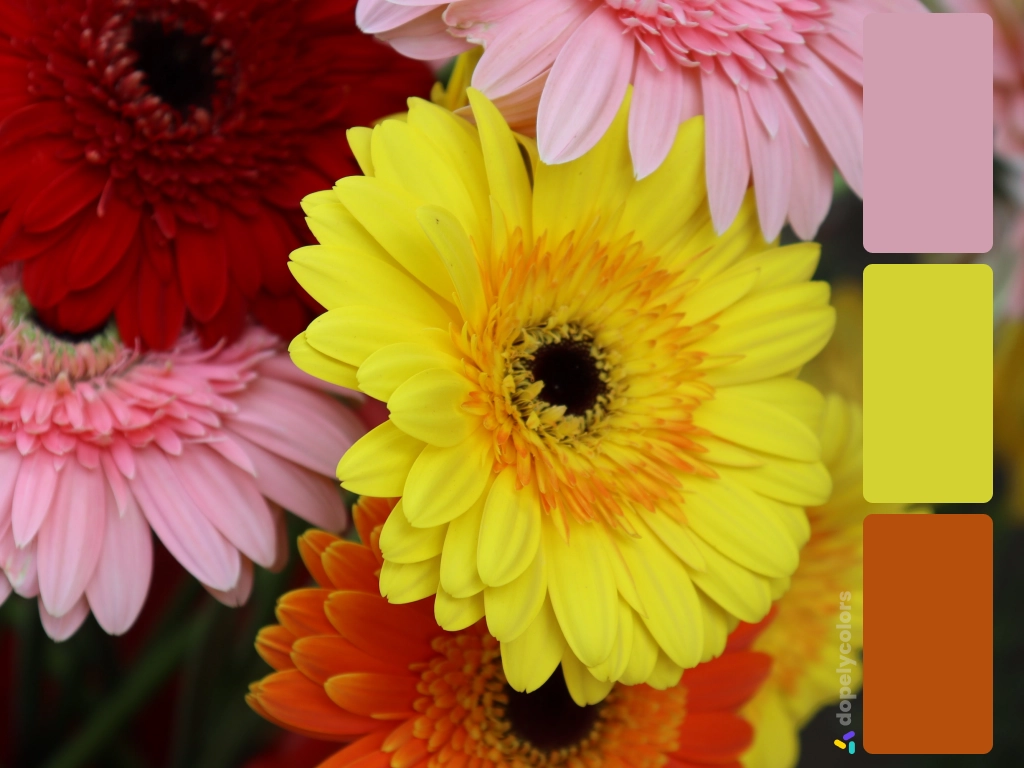
Marguerite Daisy
The most common colors for marguerite daisy petals are yellow, white, and light pink with yellow centers. Also, the Spanish Canary Islands are suitable for growing this type of daisy. Because it needs moderate temperature, well-drained soil and lots of light to grow.
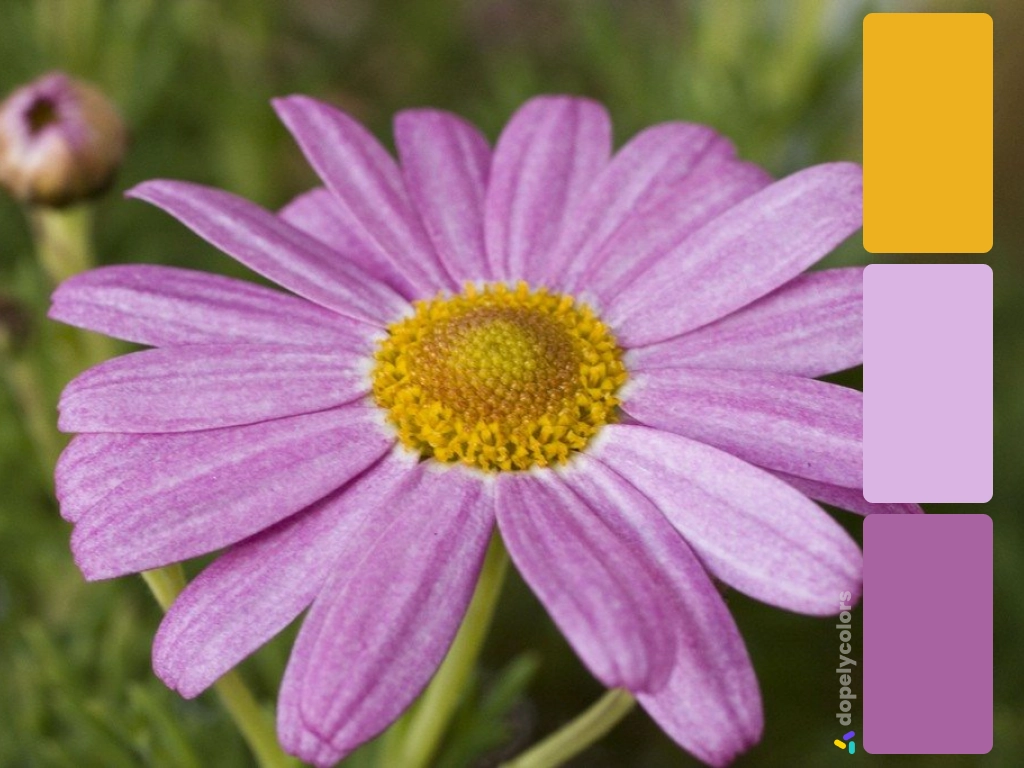
Aster Daisy
Daisy aster petal colors include white, blue, yellow, white, pink, purple and red with a yellow center. Also, the number of petals is large, long and thin. All the petals eventually form a star-shaped flower. From late summer to autumn is the growing time for this type of daisy flower.

Desert Star Daisy
Indeed, this annual plant has a very short stem, as if the flower is on the ground. It is also native to Mexico, Arizona, Nevada and California.

Curly Leaf Daisy
The curly leaf variety has bright yellow petals and curly leaves. Besides, rocky and sandy areas are the best places for this kind of flower to grow.

Silver Townsendia Daisy
In fact, this species gets its name from the hairs on its flower stalks, giving it a silvery appearance. This type of daisy flowers have white petals and a yellow center. They grow in sunny and sandy areas.
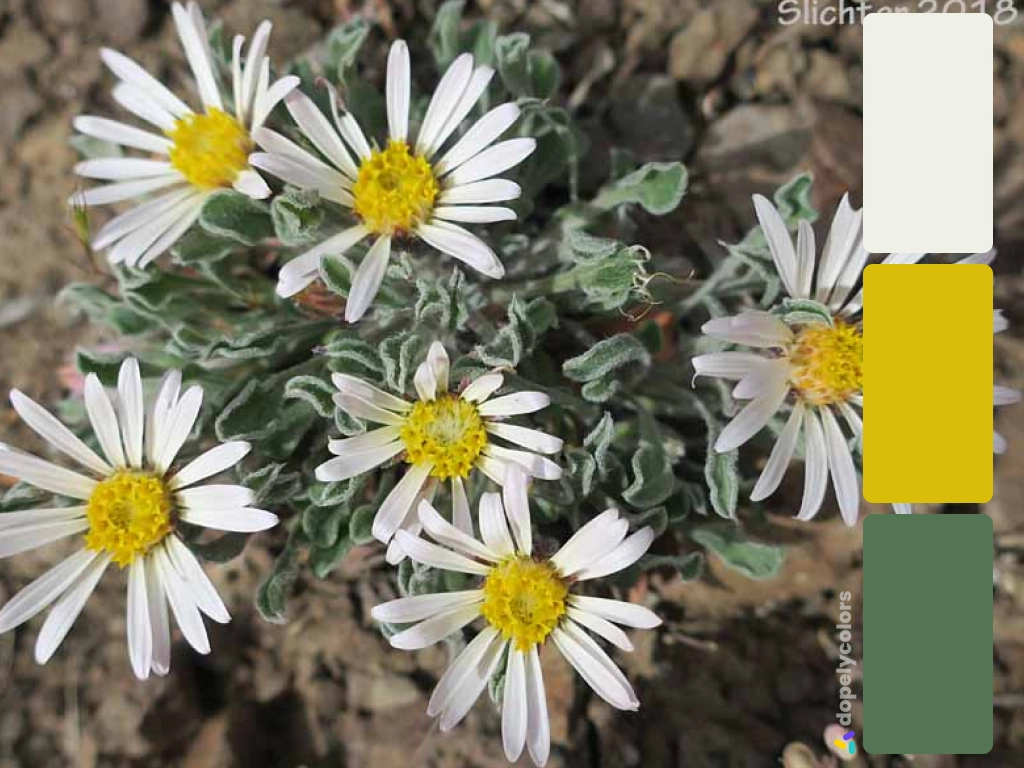
Florist’s Daisy
The scientific name of this species is Chrysanthemum morifolium or mums for short. The color of the petals of this species is yellow, white, wine, orange and pink. In the florist’s daisy variety, there are several layers of petals around the central part, giving the flower a pom-pom-like appearance. The flowers of this species are edible and have medicinal properties, but its leaves are poisonous. In traditional Chinese medicine, the petals of this flower are used to treat skin spots, anxiety and eye problems.
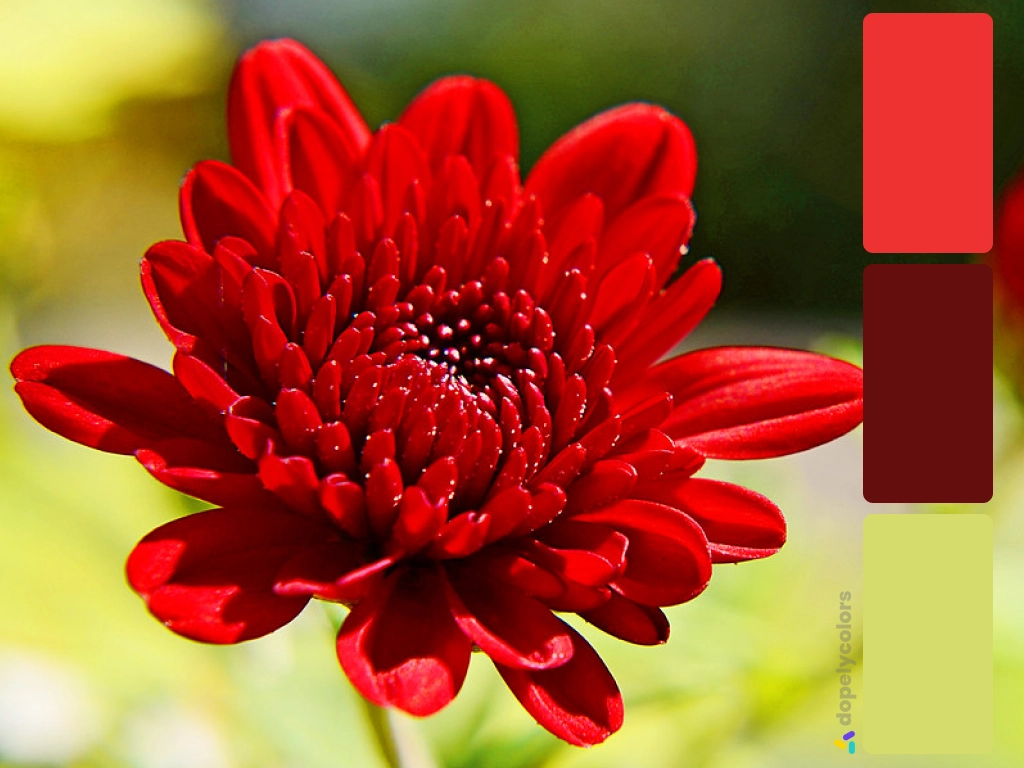
Dahlberg Daisy
July and August are the best time to grow this type of daisy. This species is a fragrant, annual and ornamental plant. The petals of this species are yellow to orange.

Oxeye Daisy
The most popular type of daisy for meadows is the type that grows as wild flowers. Well-drained soil is suitable for growing this species. These flowers also have white petals and a yellow center. With the difference that they are smaller, about one to two and a half inches. In addition, the leaves and flowers of this species are edible. Its flowers are used to decorate cakes and add to salads, and its leaves are used as a type of pepper that tastes similar to arugula.

Crown Daisy
Crown Daisy is one of the annual edible plants and grows in cold to mild conditions. You have probably seen this in most Asian dishes. Daisy crown flowers are mostly ornamental, but the stem and leaves are edible. They are rich in antioxidants, which are beneficial for improving bone and cardiovascular health. The appearance of this type of petals is white with yellow tips and a yellow center.

Livingstone Daisy
These stunning flowers have white, yellow, orange, red, peach and pink petals with a small, brown and dark center making this type of species. This species can be one color or have several colors, for example, its orange petals can go from the center to peach color. Or its yellow color becomes white.

Blue-Eyed Daisy
The blue-eyed daisy species is rare. It has a dark bluish center and yellow outer ring with white petals. Its origin is South Africa.

Gaillardia Daisy
Also known as daisy blanket, this species is easy to grow and is a perennial plant. They have yellow, orange and red petals.

Coneflower Daisy
Hanging petals and spiky flower heads are the reason for such a name for this type of daisy. Of course, these flowers are also known as echinacea. The center of these flowers is higher than the petals and as if the petals have moved away from the center, this is the reason for the conical shape of the flower. Petals have white, pink, red, yellow, purple and orange colors. Also, this species must be protected from heavy rains to grow. They can be used to treat flu, cold, infection and strengthen the immune system.

Butter Daisy
Indeed, the yellow color of the petals of this flower is the reason for this name. This plant is very easy to grow in the garden because they are resistant. They are native to South America, Central America and the Caribbean.
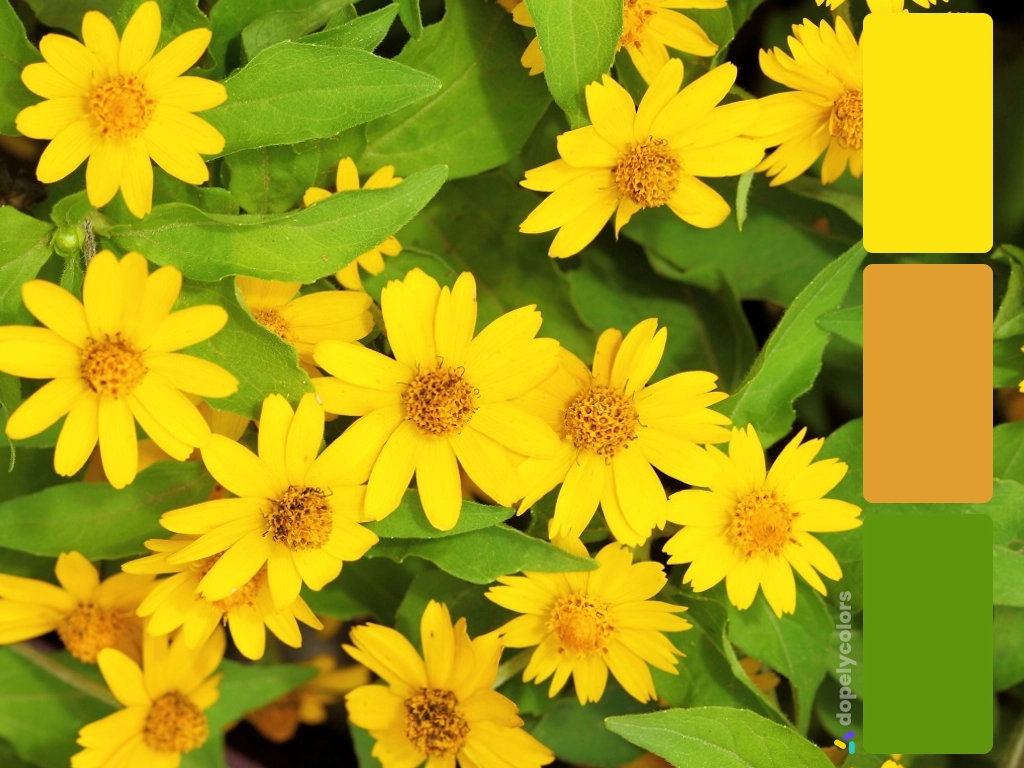
Painted Daisy
This type of daisy flowers are available in bright colors and show shades of red, yellow, purple and pink. Because these flowers can attract butterflies and repel annoying insects, they are very popular.
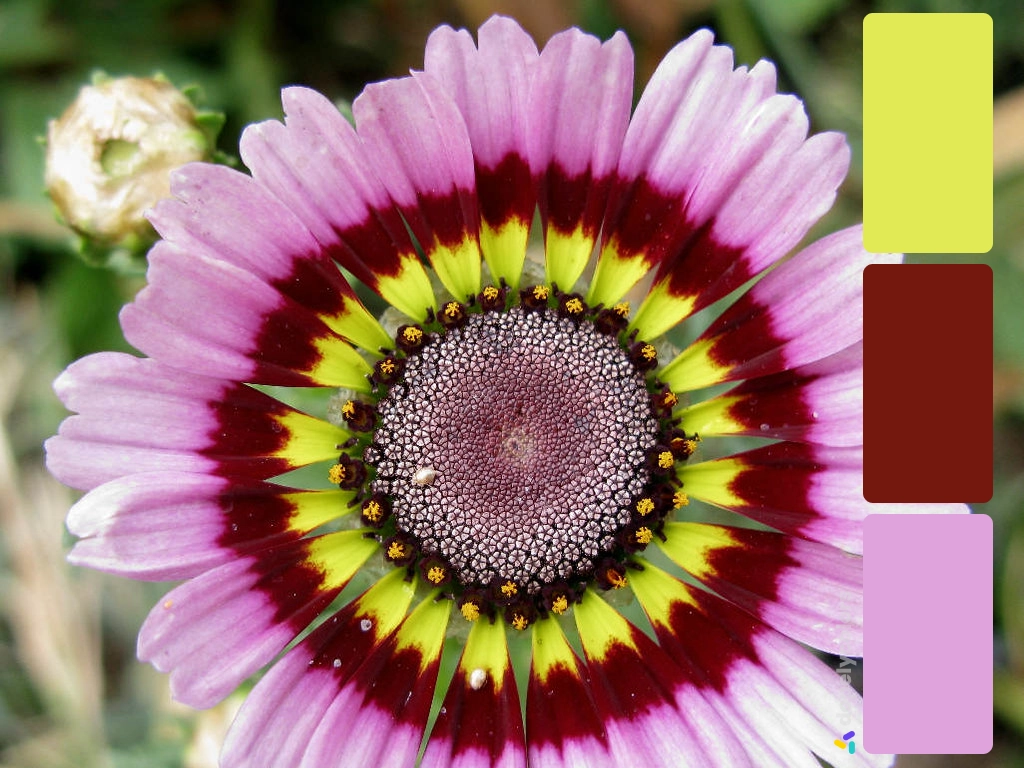
Chocolate Daisy
In fact, this drought-resistant plant blooms from early spring to late fall in the plains of Texas, Mexico, and Colorado. You must have guessed that the name of this daisy comes from its aromatic smell, which is similar to the smell of chocolate. Their smell is stronger in the morning. Also, they can even be classified as edible plants because they taste like unsweetened cocoa powder.

Swan River Daisy
This species has a wide range of blue, purple, lavender, pink and white colors with yellow, brown or black centers. They are native to Australia.

What are the superstitions about daisies? You may believe it!
I mentioned one of the most famous and popular superstitions related to Daisy at the beginning of the introduction. “He loves me, he loves me not,” we’ve probably all uttered, at least once, by plucking the petals of a daisy. These superstitions are used to determine whether someone’s love for us is real or not.
A second superstition related to the daisy also existed in the past, which was used to determine the details of marriage and when people’s wedding ceremonies would take place. Also, women used daisies to determine whether their future husband is rich, poor, businessman, thief, etc.
The third superstition related to Daisy is predicting the future. For example, a legend says that single people should go to a field with daisy flowers and take a handful of stems with their eyes closed. Finally, the number of daisy flowers left in people’s hands indicates the number of years before marriage and remaining single.

Let’s read some interesting facts about Daisies!
• I said that daisy flowers fold their petals at night and open in the morning. Although many flowers open and close due to changes in light or sensitivity. But the daisy flower is the only flower that opens in the morning.
• Daisy flowers are related to sunflowers, dandelions, artichokes and chicories. Because all the different types of these flowers have a classic shape that consists of a round center surrounded by petals.
• Flower for those born in April is the daisy. These people are happy, reliable and positive.
• Daisies are not only native to America. Rather, its main source has been Asia and Europe. And later it has been transferred and introduced to other areas. So now, you can find daisy flowers in every continent and region. Except Antarctica!

Want to add a daisy to your garden? If the answer is yes, you are lucky!
I have emphasized many times that daisies are the easiest flowers to grow. They don’t need much, if there is enough sunlight and soil with good drainage, your plant will grow quickly. Also, because different types of daisy grow at different times of the year, you can grow them in your garden according to your favorite type.
The best thing about daisies is that they attract butterflies and repel pesky insects. It is best to plant daisy seeds 9 to 12 inches apart. No matter which type of daisy you choose to plant in your garden, I assure you that none of your choices are wrong!

What is the meaning of the color of daisy educational petals? Let’s find it!
Girl Scouts will learn all the promises and rules of Girl Scouts by using Daisy’s educational petals. In fact, each petal symbolizes one of the 11 Laws of Girl Scouting. Each of the girls will be awarded a petal when they express the true meaning of these petals in their actions and words until each can complete their daisy.
So, the meaning is …
• The center daisy represents the Girl Scout promise and is dark blue.
• Bright blue petal indicates honesty and fairness, because the sky is always blue and clear. If it rains, it will rain on everyone, and if it shines, it will shine on everyone.
• Violet petal represents being a sister to every Girl Scout. Because violets grow in groups, so Girl Scouts can grow alongside other girls.
• Rose petal represents making the world a better place. In fact, we should find beauty in the world and try to spread it.
• Green petal represent wise use of resources. Because this color is the color of grass and trees, it reminds us to take care to keep the earth green.
• Magenta petal represents respect for authority. Because respect for power is a reason for increasing self-esteem.
• Purple petal shows respect for yourself and others. Because respect for yourself and others requires decency and honor.
• Orange petal shows that we are responsible for what we say and do. Because orange is the color of fire, and if fire is not used responsibly, it will destroy everything in its path.
• Red petal represent courage and strength because it is the color of blood.
• Light green petal indicate attention and care. Because plants that sprout in spring need care and attention to grow.
• Yellow petal represent friendship, because yellow is the color of the sun and the sun helps all living things to grow.

How to make colored daisies? A simple, fun and colorful project!
Daisy flowers are among the flowers that you can change to your favorite color. Thus, making a daisy with your favorite color is very easy if you use these tricks to achieve better results.
Materials needed to color the flower:
- Fresh white daisy flowers
- Food coloring
- Hot water
The first fun fact: Make sure your flowers are fresh. Because if they are withered, they cannot absorb water well.
The second fun fact: you can use other bright colors of daisy except white. But you should be careful that the final color of your flower is a combination of natural flower pigments and food coloring.

Steps to make colored flowers:
- First, cut the stems of the flowers.
- Make an oblique cut at the base of the stem so that the stem does not lie flat on the bottom of the container. Because the smooth cut makes it difficult for the flower to absorb water. Make sure to make this cut in water. In this way, air bubbles will no longer form in the small tubes at the base of the stem.
- Prepare a cup of hot water. Each half cup of water needs 20 to 30 drops of food coloring. Add it.
- Insert the moistened flower stem into this colored water. And finally, after a few hours, your colored flower is ready.
One more fun fact: if you cut the stem of a flower in half and place each part in different colored cups, you will get two colored flowers.
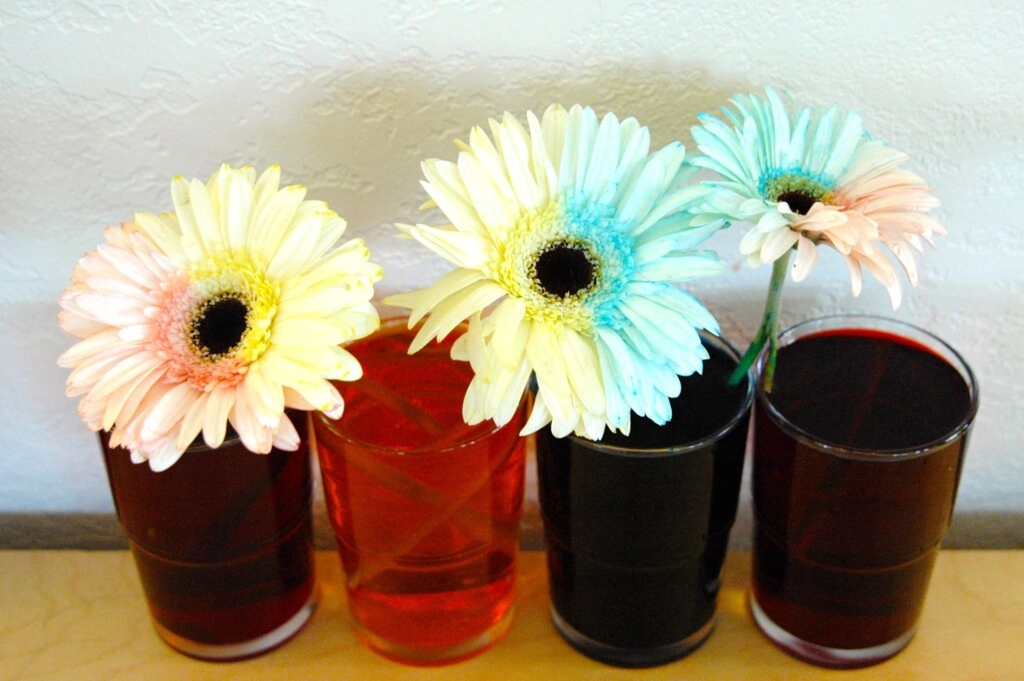
What are the daisy color codes? Colors named Daisy!
Some colors of daisy flowers are so special that they are known as a perfect color. Let’s get to know some of these colors:
The color of Yellow Daisy (#EBCE38) ⬈
Yellow daisy color code is #EBCE38. Yellow daisy is a bright and warm color. It is full of energy and joy. Also, this color belongs to the yellow family. RGB equivalent is 235, 206 and 56 respectively. Also, for CMYK equivalent, the values are equal to 0, 12, 76 and 8 respectively.

The color of Paris Daisy (#FBEB50) ⬈
Daisy Paris color code is #fbeb50. This color is one of the warm colors. But it can be said that primarily Paris Daisy belongs to the family of green colors. RGB code for Paris Daisy color has values of 251, 235 and 80 respectively. In addition, its CMYK code has values of 0, 6, 68 and 2.

The color of White Daisy (#F7F7F6) ⬈
White daisy has color code #F7F7F6. This white color has the same purity with equal percentage of red, green and blue in the RGB code. It is a symbol of purity and chastity. The values 247, 247 and 246 are the RGB values of this color, respectively, and the values 0, 0, 0 and 3 are the CMYK values of this color, respectively.
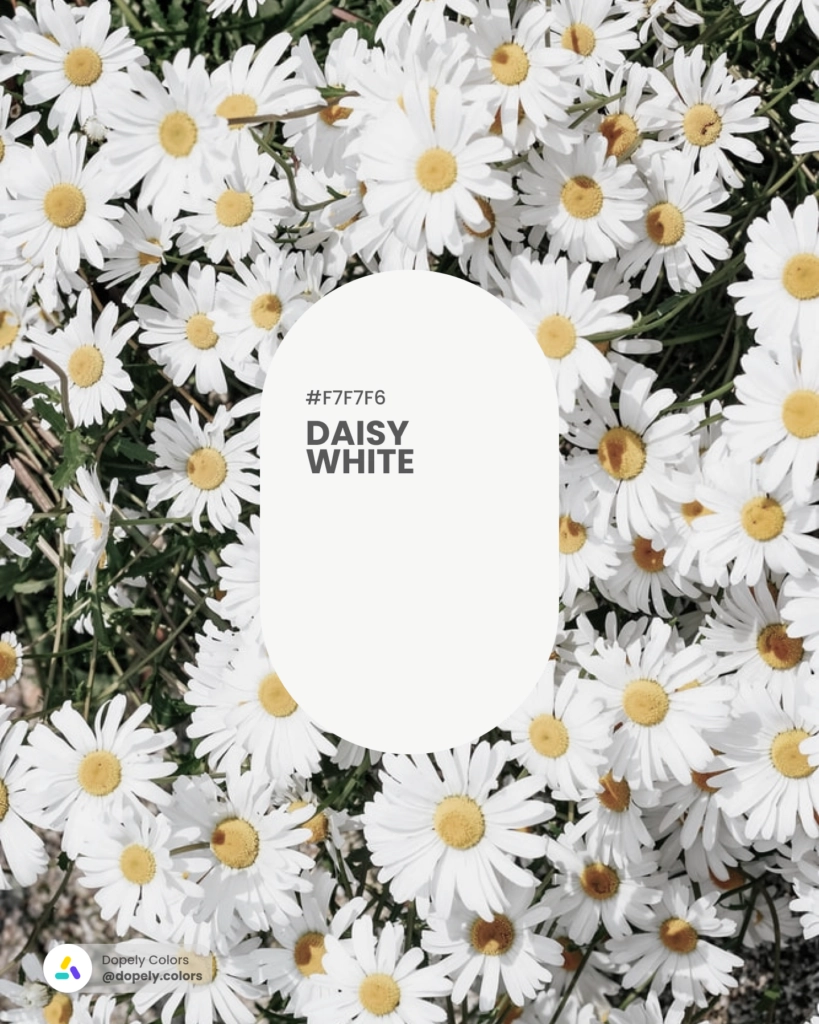
The color of Red Daisy (#C7192B) ⬈
This bright color belongs to the red family and is a warm and energetic color. Its hex code is #C7192B. The complementary color of Daisy Red is Tiffany Blue.

The color of Pink Daisy (#E4C3C7) ⬈
For pink daisy, the hex code is #E4C3C7. This color belongs to the red family and is a light shade of red. Its complementary color is Columbia Blue. For daisy pink, the RGB values are 232, 149, and 154, and the CMYK values are 0, 16, 14, and 9.

The color of Daisy Bush (#5B3E90) ⬈
This beautiful color with hex code #5b3e90 is part of the purple family. Also, this color is a combination of magenta and blue and is part of the cold color family. It is appropriate to use green next to this color. The RGB code of this color is equal to 84, 56 and 163, and the CMYK code of this color is equal to 0.48, 0.66, 0 and 0.36.

The color of Daisy Cream (#FFF2E2) ⬈
Daisy Cream neutral color has hex code #FFF2E2. This color is a neutral and colorless shade of yellow. You can use this color in combinations including blue, red and black shades. Such a color has values 0, 4, 10 and 0 for CMYK and has values 255, 242 and 226 for RGB.

The color of Kingfisher daisy (#583580) ⬈
This color is a dark shade of blue and magenta. Its hex code is #583580. It is part of the purple color family. Although it is a cold color, it shows a sense of dignity and respect. To have RGB values, it can be said to include 88, 53 and 128 respectively. On the other hand, to have CMYK values, it also includes values of 31, 59, 0 and 50.

The color of Delicate Daisy (#E9EDC0) ⬈
This pleasant color with hex code #E9EDC0 is part of the green color family. Of course, a shade much paler than green. This color is similar to spring blossom colors. Finally, the most widely used color codes for any color are RGB and CMYK. The first values are equal to 233, 237 and 192 and the second values are equal to 1.69, 0, 18.99 and 7.06.
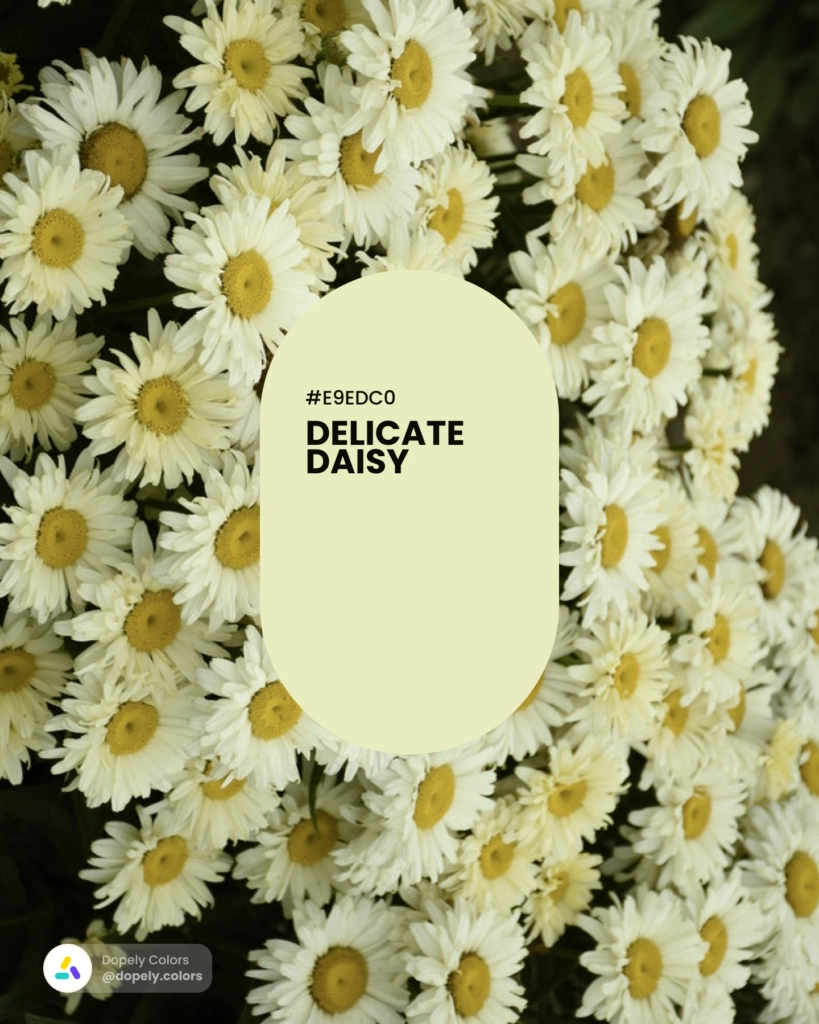
Last line
Fantastic, isn’t it? Daisies are so abundant that it was not possible to cover them all in this article. But I assure you that I have introduced the most popular and most beautiful of them. The variety of daisy species showed us that they are not just white and small in size. But there are daisies with large and sometimes strange sizes. This range allows you to choose the best options for your garden or bouquet!


